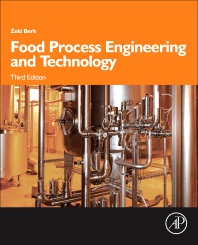3 Reasons to Optimize Food Production with Real-Time Video Monitoring

Image courtesy of Opticom Technologies.
Food production plants are under more scrutiny than ever. On the one hand, they have to deal with the high inflation rate in the past couple of years, which pressures them to keep prices low, despite their costs having increased.
On the other hand, they have to abide by hundreds of federal safety rules — not to mention the state regulations.
It’s a lot — and, if you’re managing a food processing plant, you know exactly what we’re talking about. At Opticom Tech, most of our customers in this industry have started to talk more and more often about the need to optimize their processes so they can cut costs without cutting corners and so they can abide by the safety rules more easily.
When you think about video monitoring, the first thing that comes to mind is security. While that is a big perk indeed, there are much bigger benefits to implementing the right video monitoring system.
1. Enhance Food Processing Quality Control
One of the primary advantages of real-time video surveillance in food production is its ability to enhance quality control. Surveillance cameras allow for continuous monitoring of production lines, ensuring that every stage of the process adheres to established standards and protocols.
This continuous oversight helps you identify and rectify any deviations or anomalies promptly, thereby reducing the risk of product recalls and ensuring that only high-quality products reach consumers.
For instance, cameras can monitor the cleanliness of production areas, the handling of raw materials, and the adherence to hygiene practices by staff. Any lapses can be immediately flagged and corrective measures can be implemented without delay.
2. Improve Food Processing Operational Efficiency
By providing a bird’s-eye view of the production floor, your video monitoring system will enable your managers to identify bottlenecks, streamline workflows and optimize resource allocation.
For example, video footage can reveal inefficiencies in assembly line processes, allowing for adjustments that enhance throughput and reduce downtime.
3. Ensure Compliance
Food production is a highly regulated industry, with stringent standards set by various health and safety authorities. Compliance with these regulations is non-negotiable, and failure to adhere can result in severe penalties and reputational damage.
Real-time video surveillance helps you ensure compliance by providing documented evidence of adherence to regulatory requirements.
Surveillance footage can serve as proof of compliance during audits and inspections. It demonstrates that the facility maintains high standards of cleanliness, follows proper food handling procedures, and enforces worker safety protocols.
This documented evidence is invaluable in case of any disputes or investigations, providing a clear record of the facility’s commitment to regulatory standards. Thus, it can help you save hundreds of thousands of dollars in fines and downtime.
What Kind of Cameras Do I Need in My Food Processing Plant?
Would you use mining equipment in your food processing plant? This is exactly why you shouldn’t use off-the-shelf cameras for industrial applications.
Rugged cameras are designed to be durable and resilient. They are built with robust materials that can resist corrosion, water, and dust, making them suitable for installation in various parts of the production facility.
For example, in areas where food is processed or packaged, cameras are exposed to moisture and frequent cleaning. Rugged cameras with AISI SS316 ratings ensure that they remain, not only functional but also meet mandated requirements.
While they are less expensive, off-the-shelf cameras are designed for home and commercial applications and they cannot withstand the washdown conditions in a food processing plant. In the long run, the right cameras have a lower cost of ownership because you don’t have to replace them often.
We’ve seen facilities use the same cameras for more than ten years, with very little maintenance and no need to replace them any time soon. This is happening not only because they chose AISI SS316 rated cameras but because they also chose the right camera for each area of their food processing plant.
You don’t need cameras that “have it all” everywhere — in some areas, you will need AISI SS316 cameras, while in others, standard security cameras are more appropriate.
We recommend working with a trusted industrial video monitoring partner to determine your facility’s needs and build a system that meets your goals and budget.
Looking for a reprint of this article?
From high-res PDFs to custom plaques, order your copy today!








